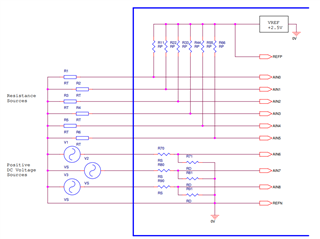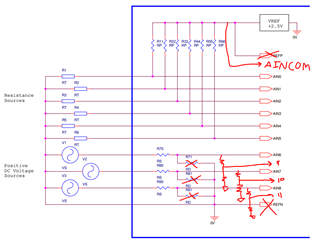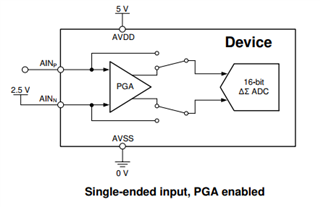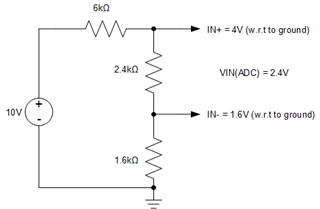Other Parts Discussed in Thread: ADS114S08, ADS124S08
Tool/software:
I am planning to use ADS114S08B to acquire 6 passive (resistance) and 3 active (voltage) single-ended inputs, all these inputs must be referred to GND (0V).
For passive inputs PGA is needed and the resistance source has to be feeded (pull-up) with the same VREF used by the converter (ratiometric acquisition). I think using the two internal IDACs is not applicable in this case (6 indipendent inputs).
In this case I see that AVDD = +2.5V and AVSS = -2,5V in order to use the internal PGA, right?
AINCOM pin is to be connected to GND (0V) for single-ended inputs, right?
I cannot feed passive inputs with the internal 2.5V VREF: REFCOM pin should be connected to AVSS, so REFOUT voltage is near 0V referred to GND, right?
So I have to use an external reference 2.5V VREF to feed feed passive inputs and to be connected at REFP0 / REFN0 pins. Connecting REFP0 = +2.5V and REFN0 = GND (0V) is correct?






